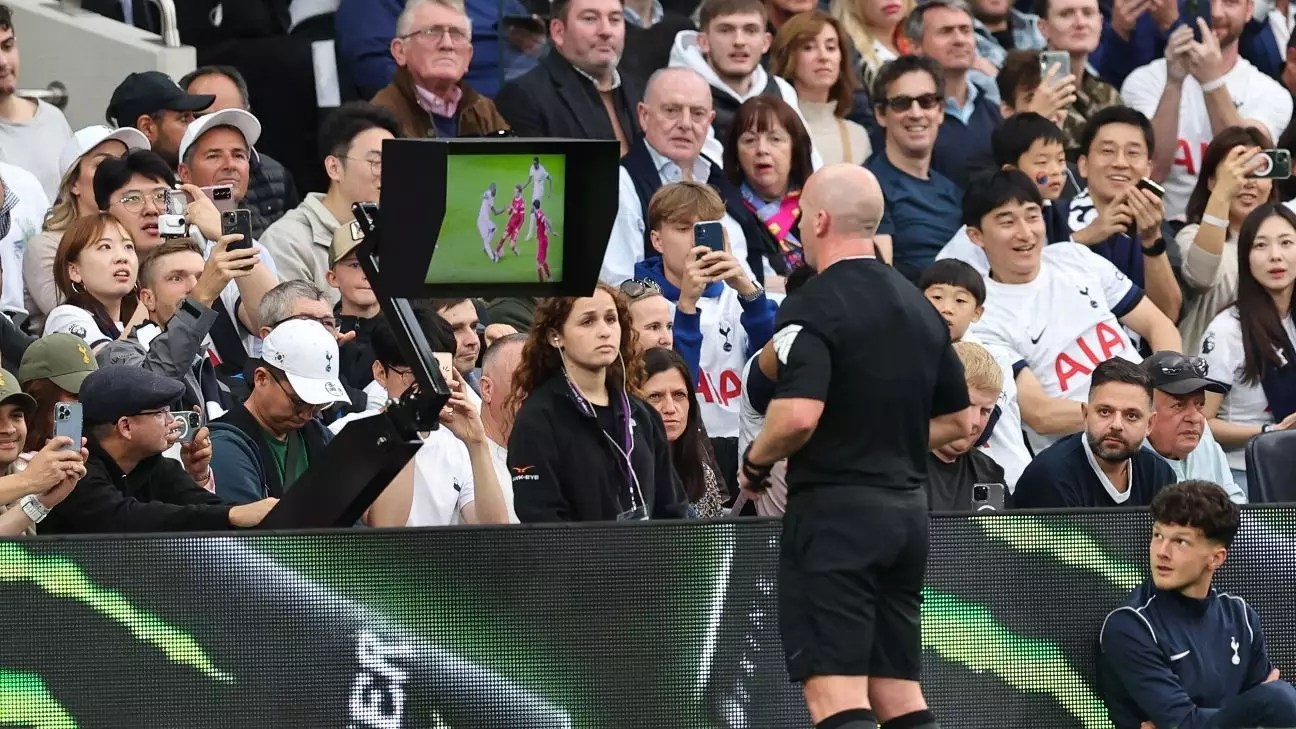In the world of football, communication between referees, players, and fans plays a crucial role in ensuring transparency and understanding of the decisions made on the field. Recently, chief refereeing officer Howard Webb has proposed a new initiative to enhance communication between referees and fans in the Premier League. Webb suggests that referees could soon announce to stadium crowds and television audiences why they have changed their decisions after visiting the VAR monitor. This change aims to provide more clarity and insight into the decision-making process, thus improving the overall viewing experience for fans.
The proposal to announce VAR decisions to the crowd only after the on-field referee has visited the pitch-side monitor is a step in the right direction. This new approach, which has already been successfully implemented in international tournaments like the Women’s World Cup, allows referees to explain their reasoning behind overturning a decision. The idea behind this initiative is to make the VAR process more understandable and transparent for fans, ultimately bridging the gap between the officials and the audience.
While the introduction of VAR explanations is a positive development, it is essential to learn from past mistakes and refine the process further. The Women’s World Cup highlighted initial challenges with referees’ explanations being drowned out by crowd noise, leading to confusion among spectators. However, by prioritizing the explanation before announcing the final decision, as FIFA did in subsequent matches, the communication process became more effective and easier to follow. This iterative approach demonstrates a willingness to adapt and improve communication strategies for the benefit of all stakeholders.
In addition to enhancing communication around VAR decisions, the introduction of semiautomated offside technology (SAOT) in the Premier League aims to increase the accuracy and efficiency of offside calls. By reducing the waiting time for VAR decisions and providing a better visualization of the final result, SAOT seeks to streamline the decision-making process, particularly in cases of tight offsides. This technological advancement is expected to improve the overall flow of the game and reduce potential errors associated with human judgment.
Challenges and Opportunities
While the implementation of VAR explanations and SAOT technology bring significant benefits to the footballing world, they also present new challenges and opportunities for improvement. The need to ensure effective communication between referees and fans, as well as the meticulous calibration of automated systems like SAOT, underscore the importance of continuous innovation and adaptation in the realm of officiating. By addressing these challenges head-on and embracing technological advancements, football can elevate the standards of transparency, accuracy, and efficacy in decision-making on the field.
The initiative to improve communication in football through VAR explanations and the introduction of SAOT technology represents a significant step forward in enhancing the overall viewing experience for fans, players, and officials alike. By fostering transparency, clarity, and efficiency in decision-making processes, the footballing community can cultivate a culture of trust and understanding that enriches the game for generations to come. As we continue to embrace innovation and strive for excellence in officiating, the future of football looks brighter than ever before.


Leave a Reply